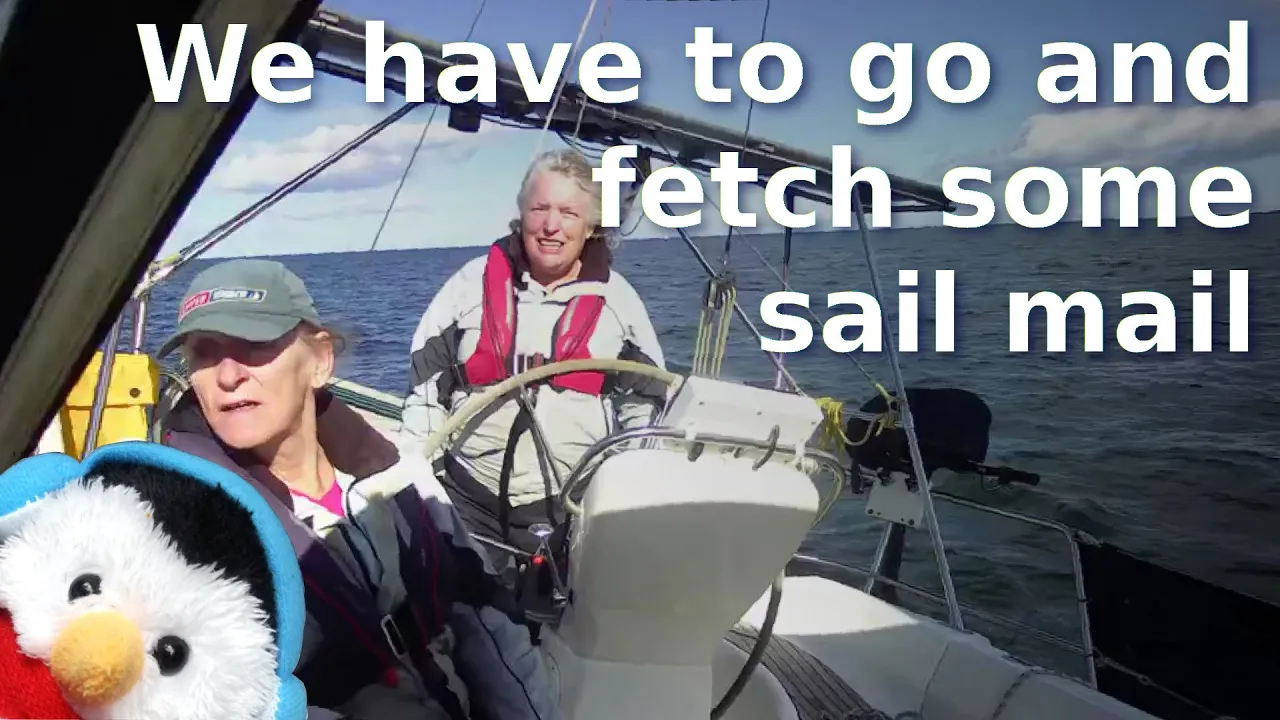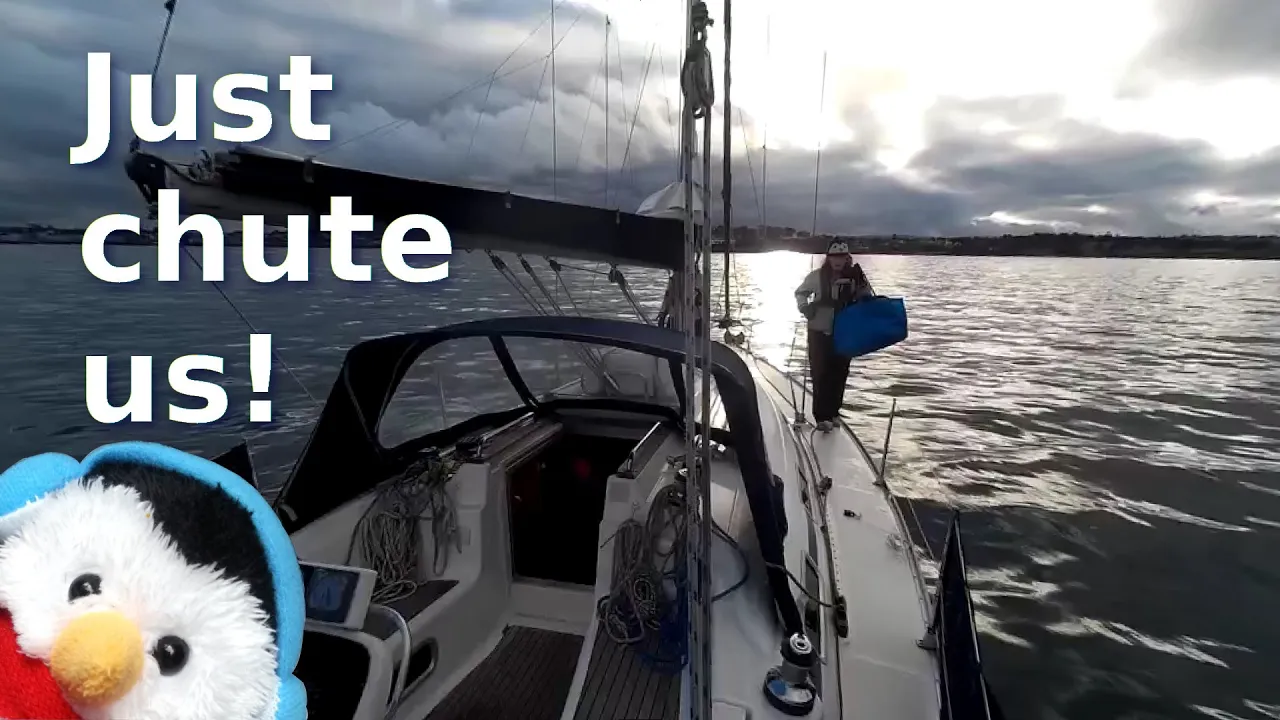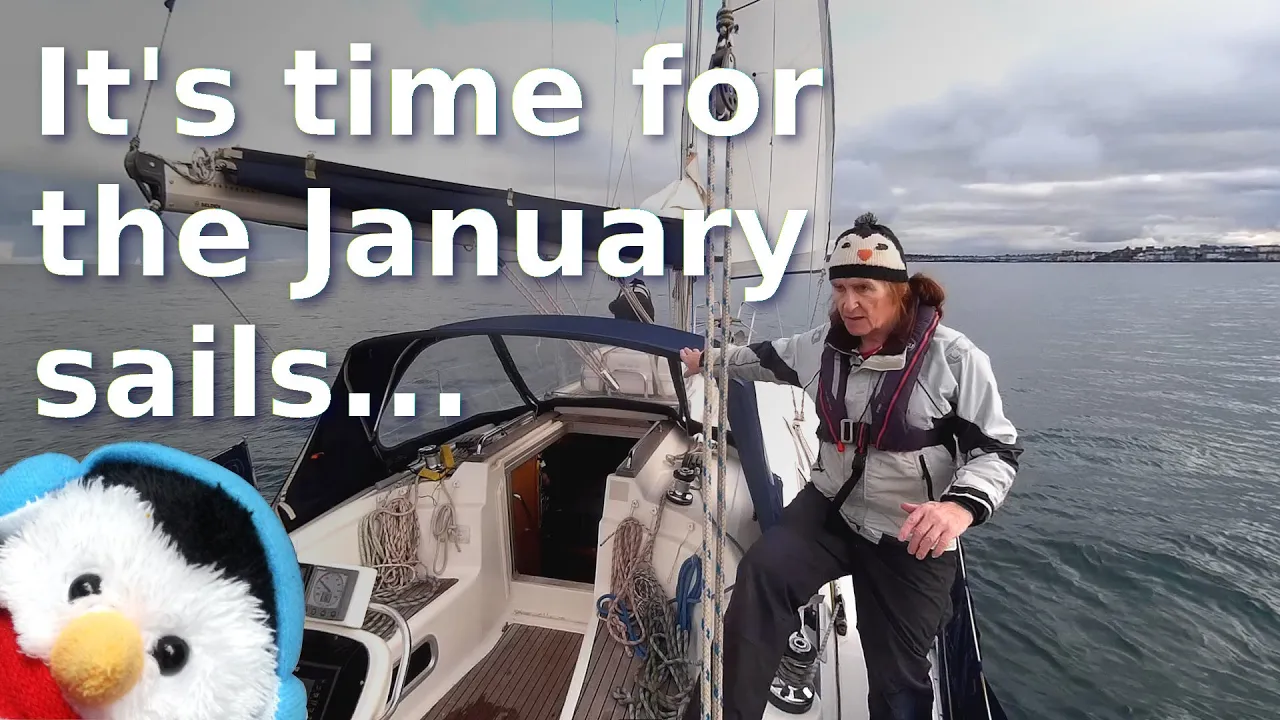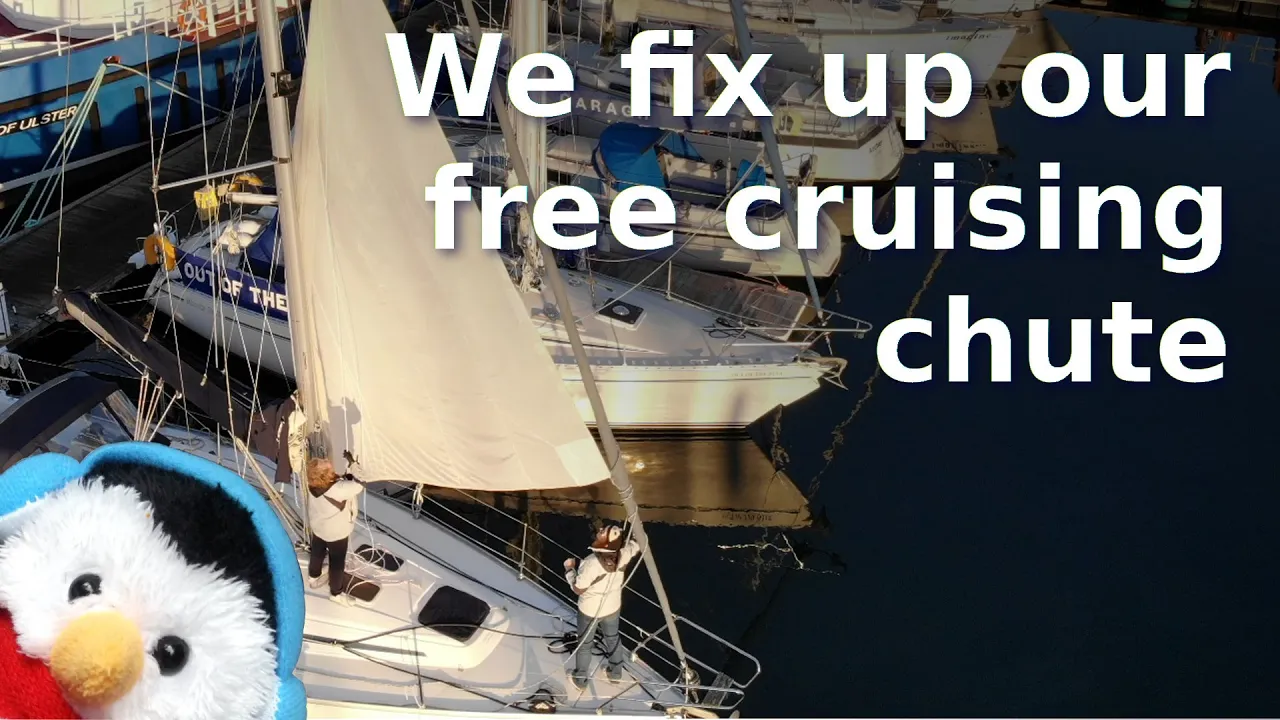We were in Arglass and we were preparing to leave to go South. However, the video shows the last sewing project that I did in Bangor, where I used tape around a spare bit of fish TV fabric. The tape made sure that the edges of the fabric did not fray, while still keeping the fabric as large as possible. I then used some of the money that our coffee supporters give us to buy some poppers that I put at the top of the fabric, that way I could secure the fabric to the door. As the fabric is of fish she absolutely loves it and thinks that it is her TV
After we had left Ardglass, we sailed along with just the Genoa, then we decided that we wanted to put the main up, and rather than put the engine on, we decided to heave to. So in Salty Lass, we have to:-
- Reef in the Genoa – Our Genoa is 125%, which overpowers the nose in the heave to, so we usually reef in to 100%, which is the first reefing mark on our Genoa.
- Remove the restraining line – When we do not have the sail up we restrain our boom with a line, so we have to remove this first and to do so we release the main sheet so that the restraining line is no longer under pressure, then we can remove that, followed immediately by pulling in the main sheet to centre the boom
- Undo all the reefing line bundles – We were using the heave to manoeuvre to lift the main, so we made sure that the reefing lines ran freely, by undoing all the reefing line clamps and releasing the reefing lines
- Heaving to – To heave to, you need the wind at the front of the boat, then you turn through the bind until the Genoa backs. You then oppose the turning motion with the rudder.
- Complete the tack – We had too much Genoa out to keep in the heave to position so we completed the tack
- Reduced the Genoa – After the heave to failure, we reduced the Genoa to the two reef mark and tried again
- Oppose the turn – Once we were heaved to, we opposed the turn with the rudder. The forces involved was just enough to keep the boat balanced
- Hoist the main – Once we were balanced we tried to hoist the main, but the batons went out of the lazy jacks and got tangled up
- Put on the engine – After our second failure, we put on the engine, pulled in the Genoa and turned to wind, so that I could hoist the main
- Tidy up – After any sail manoeuvre, there are sheets and halyards all over the place, so we tidied up so that the cockpit was neat and tidy
Putting of our preventer
As we were sailing down wind, the boom was all moving from side to side with the swells, so we put our preventer on, but before that we had to find it in the locker because the pulley part had fallen off its peg. It gave me something to do pulling everything out of the locker and repacking it. Once we had all bits we fitted the preventer
- Pulley – This goes around the forward cleat on leeward side
- Preventer line – This goes from the securing line on the boom to the pulley at the front of the boat, then back to the rear cleat. This preventer line has to be put on the leeward side so can be quite dangerous to fit.
- Securing line – This goes from the preventer line to the boom and is needed so that if we need to tack with the preventer on, then we unattach the preventer line from the securing line and carry out the tack as normal. We can either move the preventer line or just leave it as we are usually keep to one tack, the tack with the preventer and use the other tack for just a short period of time.
Anchoring in Dundalk Bay
That night we anchored in Dundalk bay, then put the courtesy flag up as the sun went down













